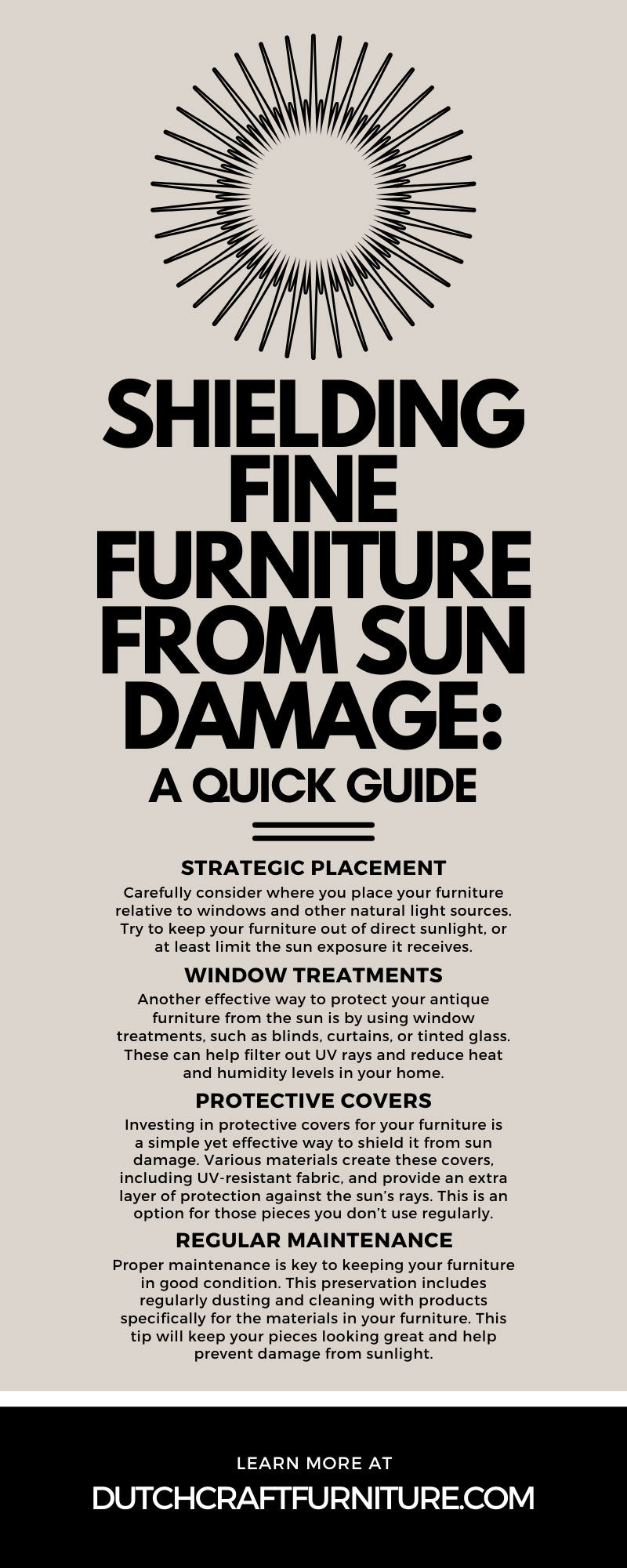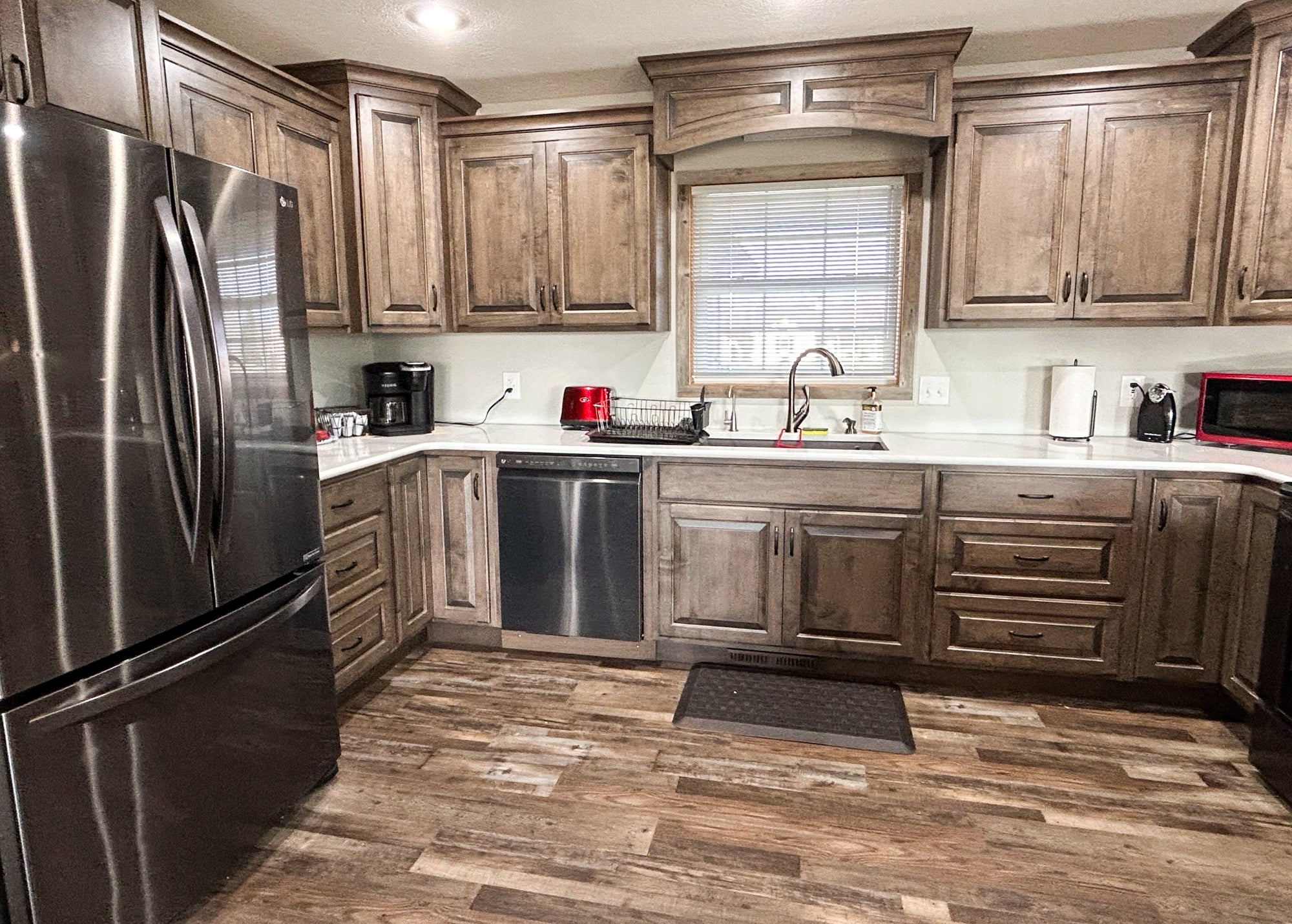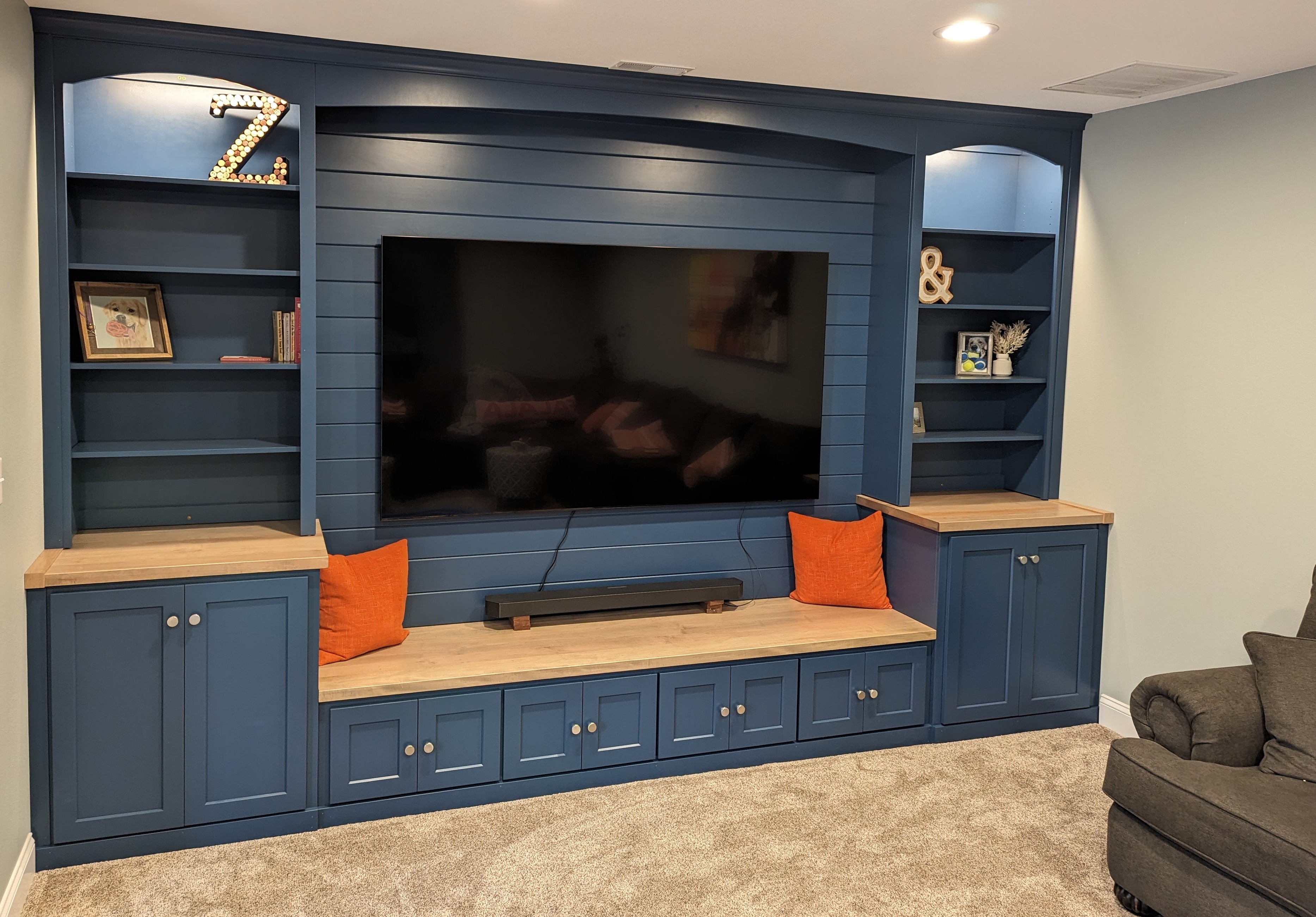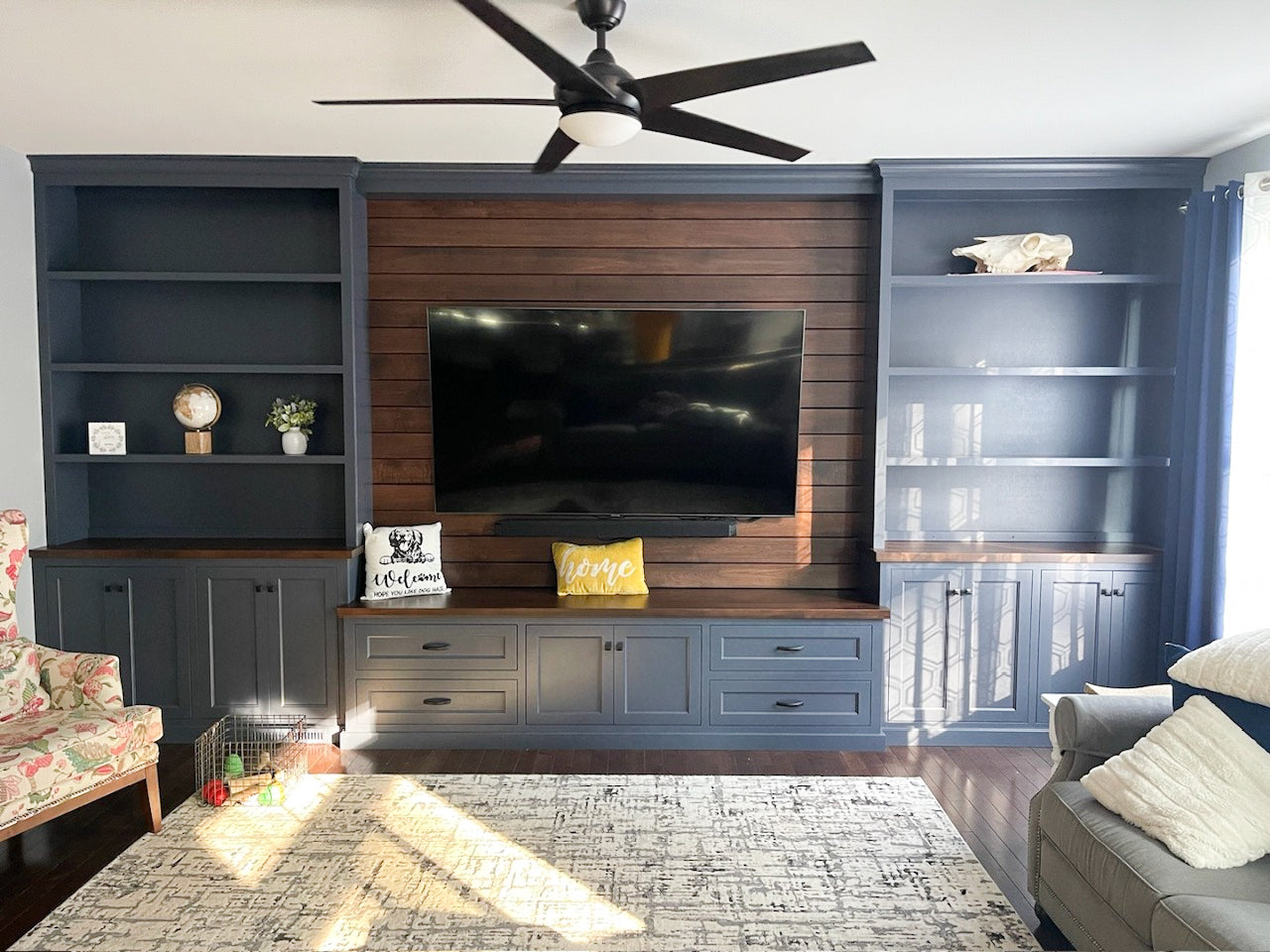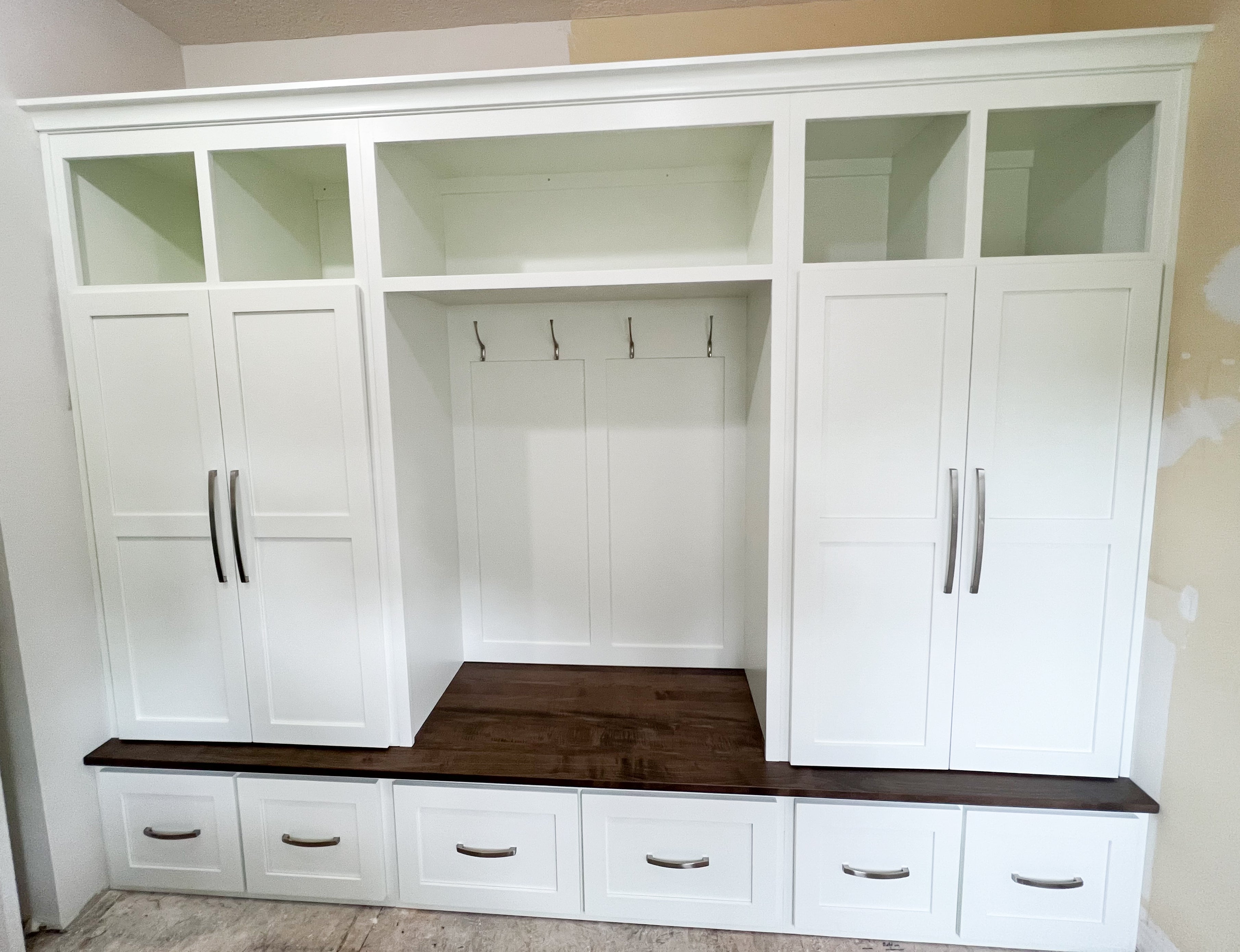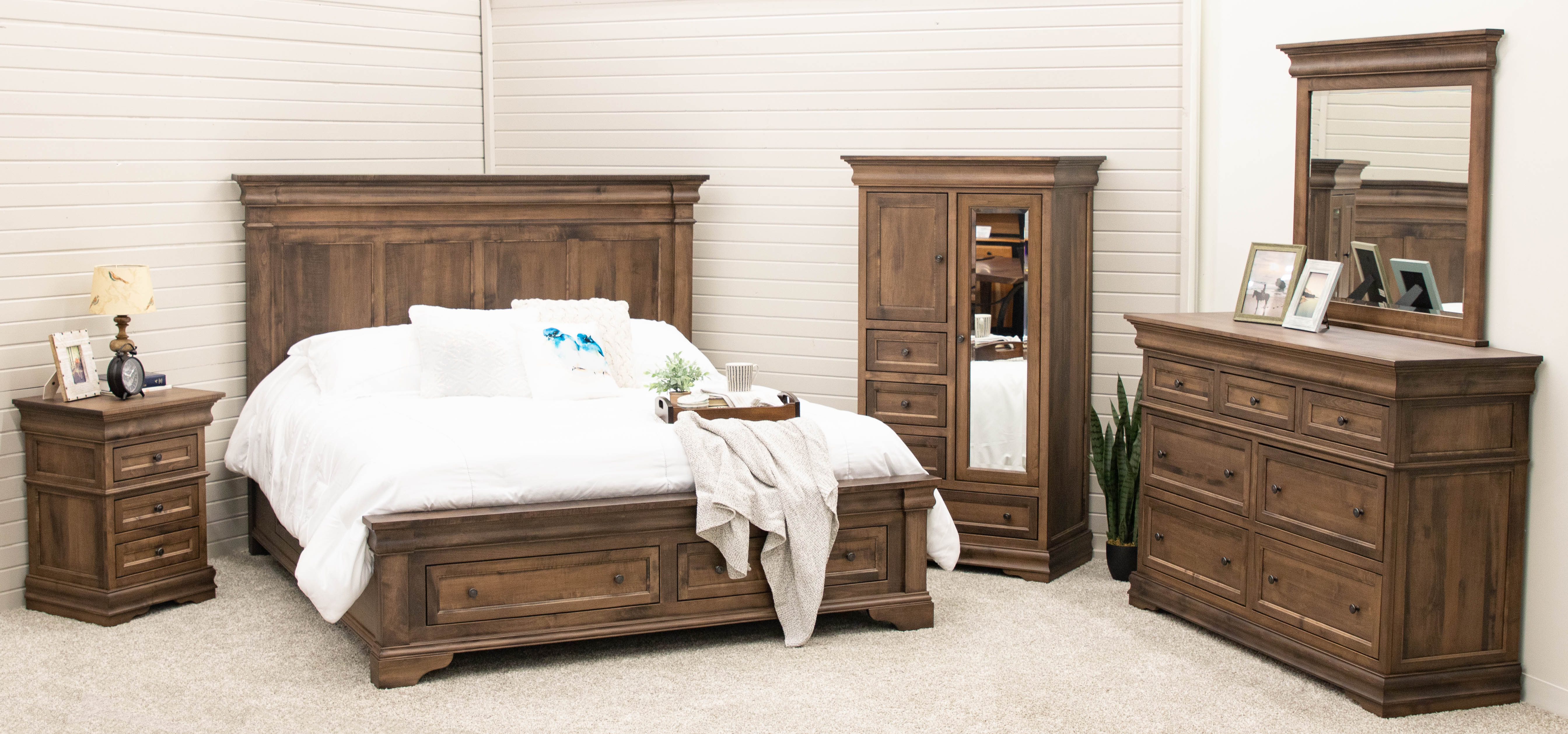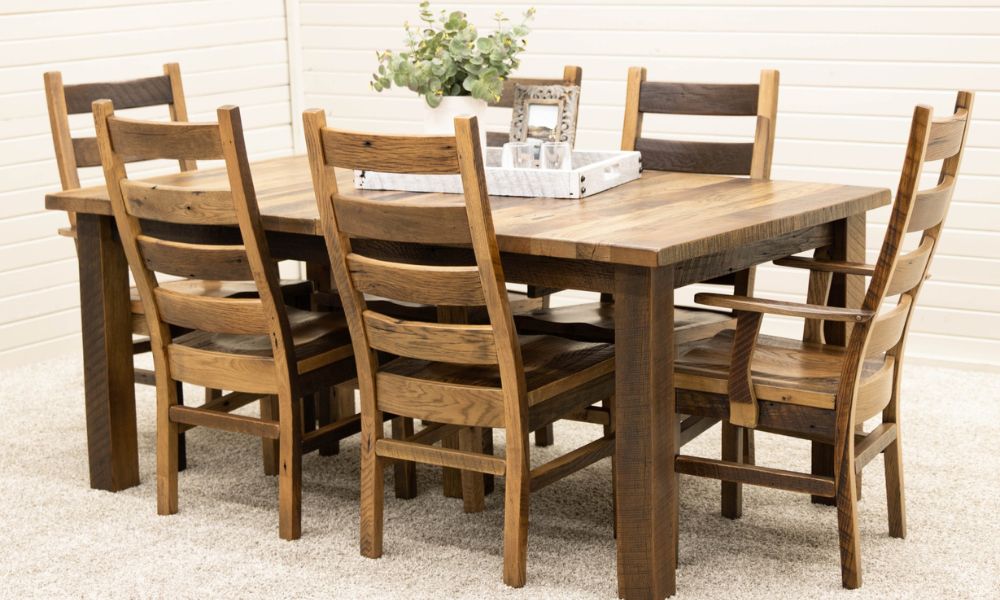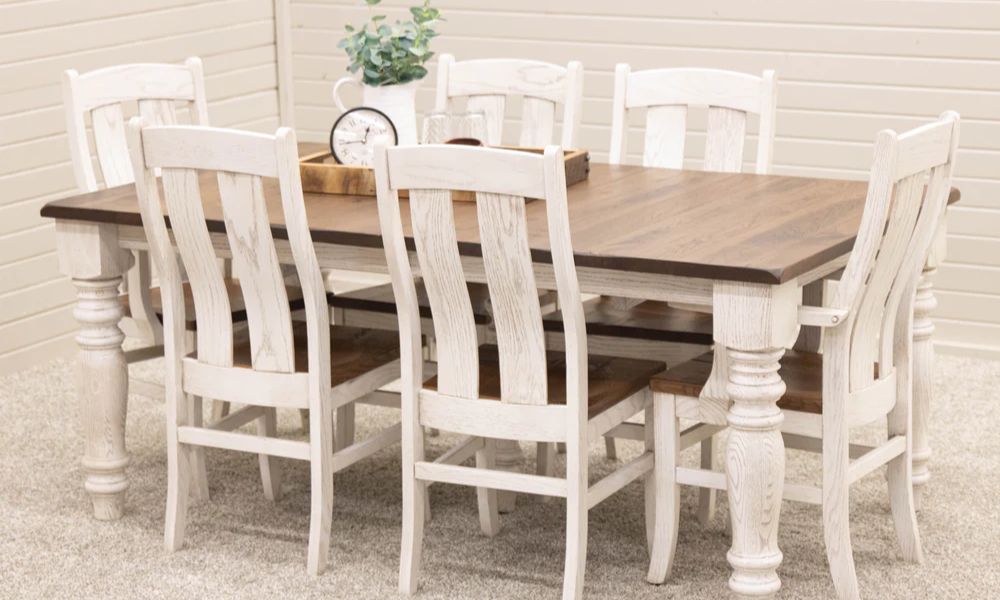Shielding Fine Furniture From Sun Damage: A Quick Guide
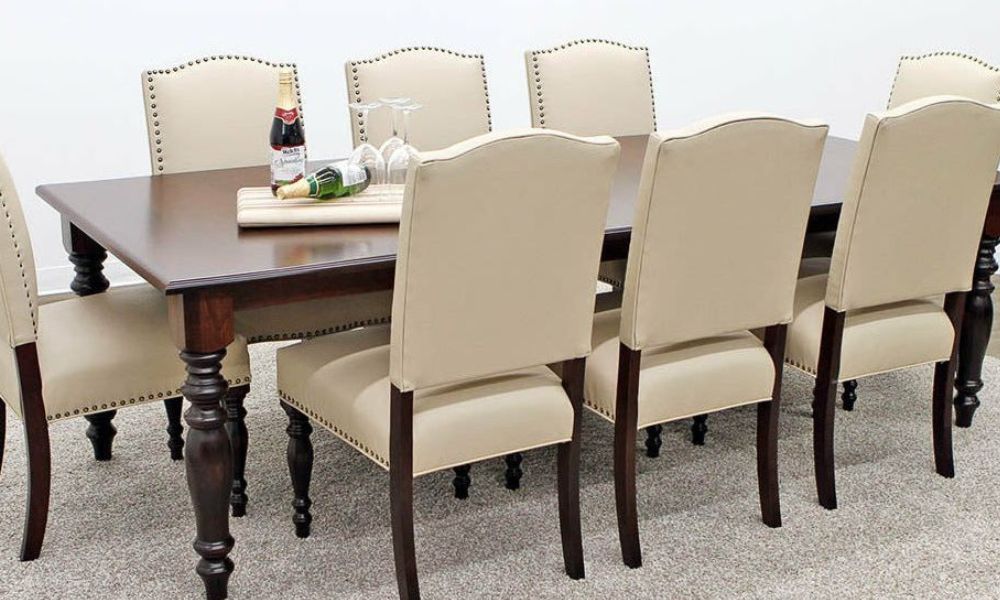
Understanding how sunlight affects your furniture is important for all furniture owners. While natural light can be beautiful and uplifting, it can also cause damage to your cherished pieces if not properly protected. Here are some tips for shielding fine furniture from sun damage and keeping it looking its best for years.
Why Sunlight Can Be Harmful
It’s no secret that the sun produces powerful rays, both visible and invisible. These rays can fade colors, bleach fabrics, and damage materials like wood and leather. While some damage is reversible or repairable with professionals, prevention is always better than cure for your furniture.
The UV Factor
The main culprit for sun damage is ultraviolet (UV) radiation. These high-energy rays can easily penetrate fabrics, causing fading and discoloration. This process accelerates when you expose furniture to direct sunlight for extended periods.
Heat and Humidity
In addition to UV rays, heat and humidity can also cause harm to your furniture. High temperatures can dry out materials, causing cracking and warping. On the other hand, humidity can create the perfect environment for mold and mildew to grow, leading to unpleasant odors and damage.
Catalyzed Conversion Varnishes
The first and most important measure you can take to protect your new furniture is to ensure that it has a catalyzed conversion varnish. This is the most durable finish for wood furniture available today. Simply put, it includes a hardening substance known as a catalyst.
The furniture maker must add the catalyst to the finish before the application, spraying it instead of brushing it on in several thin coats. The setup involved to ensure a high-quality finish means this is not an option for DIYing. Our finish specialists create controlled environments at the manufacturing facilities to eliminate even the smallest dust particles in the air.
Benefits of Catalyzed Conversion Varnish
Now that you understand the finish applied to your Amish furniture, we’ll explore the benefits that it brings.
Strength With Flexibility
The fact that real wood will expand and contract with changes in humidity is very important. We look for the hardest finish available that works with solid wood. If the finish is too hard, it’ll crack as the wood expands. Catalyzed conversion varnishes have enough elasticity to accommodate wood expansion and contraction without cracking or peeling.
UV Inhibitors
Catalyzed conversion varnishes contain important UV inhibitors that minimize damage from exposure to direct sunlight. Enjoy the sunlight streaming through the windows, and know your new Amish furniture has protection.
Non-Yellowing Finish
Another wonderful benefit to the finish is the fact that isn’t prone to yellowing over time, as some sealants are. The natural color of the wood may change slightly over time, but the finish itself will not.
Heat Resistance
The heat resistance of our finish is 220 degrees Fahrenheit. That means you can even set your coffee cup and dinner plate on the tabletop without using a placemat, and there won’t be a white steam spot from the heat.
While the catalyzed conversion varnish is the most durable option available, it’s not indestructible. This wonderful option guarantees that your glass won't leave a water ring if it sweats. But you must be careful with scratches. There is no finish that completely protects wood furniture from knicks and scratches over time with regular use. The great thing about solid wood furniture, though, is that you can almost always have it repaired and refinished to be good as new for the next generation.
Protecting Your Antique Furniture
What if you have antique furniture or don’t know what kind of finish is on your furniture? Now that you understand why sunlight can harm furniture, we’ll explore some ways to shield it from sun damage.
1. Strategic Placement
Carefully consider where you place your furniture relative to windows and other natural light sources. Try to keep your furniture out of direct sunlight, or at least limit the sun exposure it receives.
2. Window Treatments
Another effective way to protect your antique furniture from the sun is by using window treatments, such as blinds, curtains, or tinted glass. These can help filter out UV rays and reduce heat and humidity levels in your home.
3. Protective Covers
Investing in protective covers for your furniture is a simple yet effective way to shield it from sun damage. Various materials create these covers, including UV-resistant fabric, and provide an extra layer of protection against the sun’s rays. This is an option for those pieces you don’t use regularly.
4. Regular Maintenance
Proper maintenance is key to keeping your furniture in good condition. This preservation includes regularly dusting and cleaning with products specifically for the materials in your furniture. This tip will keep your pieces looking great and help prevent damage from sunlight.
5. Rotation
If you have furniture particularly susceptible to sun damage, such as older wooden pieces or leather upholstery, consider rotating it periodically. This will ensure that all sides of the piece receive equal amounts of sunlight and prevent fading or discoloration in one specific area.
6. Rearranging Your Furniture
As the seasons change, so does the angle and intensity of sunlight that pours into your home. A smart, proactive approach to preserving your furniture’s beauty is regularly rearranging your seating and tables. Shifting your furniture’s position every few months can prevent excessive sun exposure to one area and spread it more evenly. It’s an innovative way to breathe new life into a room while protecting your beloved pieces from premature aging due to the sun.
7. Sealing Your Furniture
Applying a protective seal is another highly effective method of preserving your furniture’s longevity and appeal. Various types of sealants are available in the market, each designed to cater to different material requirements. For instance, wood sealants, such as varnishes, lacquers, or polyurethane, can provide your wooden furniture with an added layer of protection against harmful ultraviolet rays. This invisible shield conserves the wood’s rich color and enhances its aesthetic appeal. A spray fabric protector can help resist fading and keep your upholstery’s colors vibrant.
It's very important to understand the construction and original sealant on your furniture before applying any polish or wood sealant. For Amish furniture that the manufacturer has finished with a catalyzed conversion varnish, do not ever apply any polish or sealer. The catalyzed varnish is so hard that anything applied on top of it will never penetrate the wood. It’ll simply leave a residue buildup on top of the finish. That’s incredibly freeing, as there’s little to no maintenance for the consumer! Simple cleaning with mild soap and water is all that’s necessary.
Each piece of furniture tells a story, and with these precautionary measures, you can ensure that your story continues to unfold beautifully. When you have these tools in your arsenal, you can keep your furniture dazzling and provide comfort for many more sunrises and sunsets.
Additional Tips for Sun Protection
Aside from these main strategies, there are a few other things you can do to protect your furniture from the sun:
- Use UV-blocking film on windows: This is an affordable option that you can easily apply to windows and provides a barrier against harmful UV rays.
- Consider natural alternatives for cleaning and maintenance: Harsh chemicals can also cause damage to your furniture, so opting for more natural solutions can help preserve its integrity.
Keep an eye out for signs of damage: Regularly inspect your furniture for any signs of fading, discoloration, or other damage from sunlight. Catching these issues early can prevent them from getting worse.
Color Changes Over Time
While the finish we apply to our handcrafted furniture will not change color over time, the reality is that the wood itself may darken or change. The changes in wood color happen faster with daily exposure to hours of sunlight. Understanding the way time affects various hardwoods can help you select the perfect Amish kitchen table.
- Cherry Wood
Cherry wood has a rich, reddish hue naturally. Time and sunlight tend to darken and amplify the red tones. Cherry wood has the most noticeable change in color, especially for natural, clear finish or light stains. We have had customers be surprised when opening a light cherry table that has been sitting in sunlight for a few months and the leaves stored away no longer match the tabletop. If you put a dark stain on Cherry wood, the wood can darken and it will hardly be noticeable.
- Other Hardwood Types
Red and White Oak has long been a favorite wood used in Amish furniture. It is readily available in our area and a favorite for wood workers. Hickory is also common in our region and has become extremely popular in recent years with its’ beautiful rustic grain texture. Time and sunlight enhance the warm, golden hues in Oak and Hickory. If your furniture has a clear, natural finish or a light stain applied, you may notice a slight yellowing in these wood types. If you select a medium to dark stain for your furniture, you will never notice any change as the wood ages.
Final Furniture Protecting Thoughts
Incorporating these tips into your furniture care routine will help ensure your pieces stay in top condition. By being proactive and taking the necessary precautions to shield it, you can enjoy your fine furniture for years without worrying about sun damage. You can then continue to bask in the warm and inviting glow of natural light while keeping your furniture safe and beautiful.
